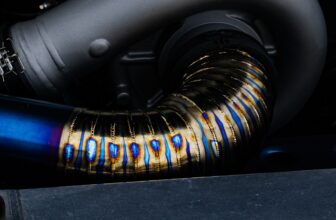As with any welding process, it is essential to have a good understanding of the variables that impact the weld’s quality. That’s where TIG welding charts and calculators come into play. TIG welding charts provide a visual representation of the welding parameters needed to achieve a specific weld. Meanwhile, TIG welding calculators help welders determine the right settings for their welding machine based on specific variables such as the type of material being welded, the thickness of the material, and the desired weld size.
What is a TIG Welding Chart
A TIG welding chart visually represents the welding parameters needed to achieve a specific weld. The chart usually includes the current range, polarity, filler metal type, shielding gas type, and tungsten electrode size. By using the chart, welders can determine the optimal settings for their welding machine based on the material they are welding and the desired weld size.
TIG welding chart
| Material | Thickness (mm) | Filler Metal Type | Amperage (A) | Voltage (V) | Tungsten Electrode Size (mm) | Welding Speed (cm/min) | Gas Flow Rate (L/min) | Shielding Gas |
|---|---|---|---|---|---|---|---|---|
| Aluminum | 0.8-1.6 | ER4043 | 20-40 | 10-14 | 1.6-2.4 | 50-80 | 10-15 | Argon |
| Aluminum | 1.6-3.2 | ER4043 | 40-80 | 14-18 | 2.4 | 30-50 | 10-15 | Argon |
| Aluminum | 3.2-6.4 | ER4043 | 60-100 | 14-18 | 2.4-3.2 | 20-30 | 10-15 | Argon |
| Steel | 0.8-1.6 | ER70S-6 | 20-40 | 10-14 | 1.6-2.4 | 50-80 | 10-15 | Argon |
| Steel | 1.6-3.2 | ER70S-6 | 40-60 | 14-18 | 2.4 | 30-50 | 10-15 | Argon |
| Steel | 3.2-6.4 | ER70S-6 | 60-80 | 14-18 | 2.4-3.2 | 20-30 | 10-15 | Argon |
| Stainless Steel | 0.8-1.6 | ER308L | 20-40 | 10-14 | 1.6-2.4 | 50-80 | 10-15 | Argon/Helium |
| Stainless Steel | 1.6-3.2 | ER308L | 40-60 | 14-18 | 2.4 | 30-50 | 10-15 | Argon/Helium |
| Stainless Steel | 3.2-6.4 | ER308L | 60-80 | 14-18 | 2.4-3.2 | 20-30 | 10-15 | Argon/Helium |
How to Read the Chart
To use the TIG welding chart, the welder must determine the material’s type and thickness. They can then look up the recommended settings on the chart and adjust their welding machine accordingly. By following the chart’s recommended settings, welders can achieve optimal weld quality.
A TIG welding calculator is a tool used to determine the optimal welding settings for a specific weld. It takes into account variables such as the material being welded, the thickness of the material, and the desired weld size. By inputting these variables, the calculator provides the recommended settings for the welding machine.






